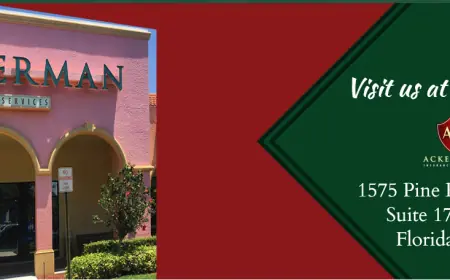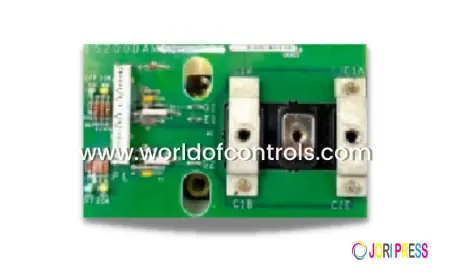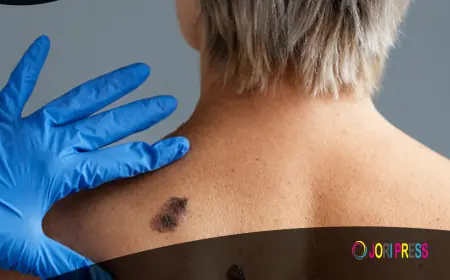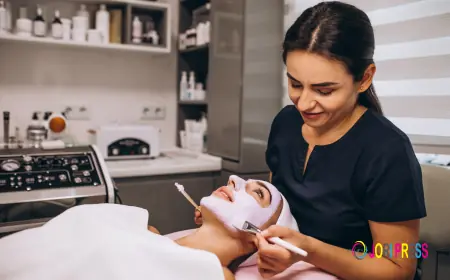Sculpt Your Ideal Silhouette with Precision Techniques
Sculpt, slim, and shine with advanced liposuction in Riyadh. Targeted fat removal for a balanced figure.

Creating your ideal body silhouette isn't about conforming to someone else's standards—it's about achieving the shape that makes you feel confident, comfortable, and authentically yourself. When traditional methods of diet and exercise have brought you close but not quite to your goals, precision body sculpting offers the refined approach needed to achieve that final vision. Liposuction in Riyadh utilizing advanced precision techniques allows for meticulous contouring that addresses your specific concerns with exactness, creating smooth, balanced proportions that enhance your natural beauty. This comprehensive guide explores how precision techniques differ from standard approaches, what makes modern body sculpting so accurate, and how these refined methods can help you finally achieve the silhouette you've been working toward.
The evolution of Liposuction in Riyadh toward increasingly precise techniques has transformed what's achievable for patients seeking body refinement. Modern precision approaches allow practitioners to address even subtle concerns with accuracy, creating results that look natural and proportionate while delivering the specific improvements you desire. Understanding these precision capabilities empowers you to envision outcomes that might not have seemed possible with earlier, less refined techniques, and to communicate effectively with practitioners about achieving your ideal silhouette.
Understanding Precision in Body Sculpting
Precision in body contouring refers to the ability to target specific areas with exactness, remove controlled amounts of fat, and create meticulously sculpted contours that enhance your natural proportions. This goes beyond simply removing fat from general regions to involve strategic, measured interventions that address particular concerns while maintaining harmonious overall appearance. Precision techniques allow for addressing subtle asymmetries, refining specific contours, and creating definition in ways that wouldn't be possible with less accurate approaches.
Modern precision is enabled by several factors: advanced instruments designed for controlled, accurate fat removal; refined techniques developed through decades of experience and innovation; technology-assisted methods that provide feedback and enhance accuracy; and comprehensive understanding of anatomy that informs strategic treatment planning. Together, these elements allow today's practitioners to achieve levels of precision that create results tailored exactly to individual goals and anatomy.
The Difference Precision Makes
The impact of precision becomes especially apparent in visible areas where even minor irregularities would be noticeable, in cases requiring asymmetry correction, when creating high-definition results with enhanced muscle definition, and when performing revision procedures that refine previous results. In these situations, the difference between adequate and exceptional outcomes often comes down to the precision with which treatment is executed.
Precision also matters for creating natural-looking results. Overly aggressive or imprecise fat removal can create unnatural hollows, irregular contours, or asymmetries that immediately signal surgical intervention. Precise techniques that remove appropriate amounts of fat in carefully controlled patterns produce improvements that enhance your appearance while looking entirely natural—the hallmark of truly sophisticated body contouring.
Advanced Instruments for Precision
Modern body sculpting employs specialized instruments designed specifically for precision work. These include microcannulas—extremely thin tubes that allow for delicate work in small areas or superficial layers where control is crucial. The small diameter of these instruments means they create minimal tissue disruption while allowing for accurate, controlled fat removal. They're particularly valuable for refining visible areas like arms, neck, or creating detailed definition.
Power-assisted devices provide controlled mechanical assistance that enhances precision by reducing the physical force required for fat removal. This consistent mechanical action can produce more uniform results compared to purely manual techniques where maintaining completely consistent movement throughout lengthy procedures can be challenging. The mechanical assistance helps create smooth, even contours across treated areas.
Technology-Enhanced Accuracy
Various technologies enhance precision in body sculpting. Ultrasound guidance can help practitioners visualize tissue layers and structures during procedures, ensuring accurate placement and movement of instruments. Some systems provide real-time feedback about fat removal, helping ensure even, symmetrical treatment. Laser and ultrasound-assisted technologies allow for controlled energy delivery that can be precisely targeted to specific tissue layers or areas.
Energy-based technologies also enable precision through their selective effects on different tissue types. Ultrasound energy at specific frequencies primarily affects fat while largely sparing other tissues, allowing for targeted treatment. Laser energy can be calibrated for precise depth penetration and controlled thermal effects. These selective capabilities contribute to precision by allowing practitioners to address specific tissues or layers with accuracy.
Precision Technique Methodology
Achieving precision results requires methodical technique beyond simply having advanced instruments. This involves systematic approaches to treatment that ensure thorough, even coverage of areas while maintaining control and accuracy. Practitioners typically work in overlapping patterns that ensure no areas are missed while avoiding over-treatment that could create irregularities. This systematic methodology is fundamental to precision outcomes.
Precision technique also involves constant assessment during procedures. Skilled practitioners frequently pause to assess symmetry, evaluate contours from multiple angles, palpate treated areas to detect any irregularities, and make adjustments as needed to optimize results. This ongoing evaluation and adjustment process is what transforms good results into exceptional ones—it's the difference between following a plan rigidly regardless of findings and adapting approach based on real-time assessment to ensure optimal outcomes.
Cross-Hatching and Layered Approaches
Many precision techniques employ cross-hatching patterns where treatment passes are made from multiple directions through the same area. This multidirectional approach helps ensure even, thorough fat removal without creating grooves or irregularities that might result from working in only one direction. The overlapping patterns from different angles contribute to smooth, uniform results.
Layered approaches involve treating fat at different depths separately, which is particularly important when working in areas with multiple fat layers or when creating high-definition results. Superficial layers may be treated differently than deeper deposits, with precision technique allowing for this differentiated approach. Understanding tissue anatomy and using appropriate techniques for each layer ensures optimal contouring throughout the treated region.
Creating Symmetry Through Precision
One of the most important applications of precision techniques is creating or enhancing body symmetry. While perfect symmetry isn't natural or necessary, significant asymmetries can be aesthetically distracting and contribute to concerns about appearance. Precision body sculpting allows for addressing asymmetries by treating sides differently to create more balanced overall appearance.
This might involve removing more fat from one side than the other to equalize contours, addressing differences in fat distribution patterns between sides, or refining areas where natural asymmetry creates aesthetic concerns. Achieving good symmetry requires careful measurement and assessment, strategic planning that accounts for existing asymmetries, and meticulous execution that implements different treatments for different areas as needed to create balance.
The Challenge of Asymmetry Correction
Correcting asymmetry is technically challenging because it requires not just removing fat but doing so in carefully controlled amounts that differ between sides while creating results that look natural and balanced. Overcorrection can create new asymmetries, while undercorrection leaves concerns unaddressed. Precision techniques and careful judgment are essential for achieving the delicate balance needed for optimal symmetry enhancement.
It's also important to understand that some degree of asymmetry is natural and universal—no one has perfectly symmetrical anatomy. The goal isn't creating artificial perfect symmetry but rather reducing noticeable asymmetries to levels where they're not aesthetically concerning. This requires both technical precision and aesthetic judgment about what degree of symmetry enhancement will create improvement without looking artificial.
High-Definition Sculpting Precision
High-definition body sculpting represents the pinnacle of precision in body contouring. This advanced approach involves strategically removing fat to enhance the appearance of underlying musculature, creating athletic-looking contours with visible definition. Achieving these results requires exceptional precision because the difference between enhancing muscle definition and creating unnatural-looking results often comes down to millimeters of fat removal.
High-definition technique involves treating superficial fat layers with extreme precision, removing fat selectively around muscle groups while leaving thin layers in strategic locations, and creating subtle contour variations that simulate shadows and highlights naturally created by muscular definition. This requires comprehensive anatomical knowledge of muscle locations and how they create surface topography, artistic vision about how to enhance these features, and technical precision to execute the planned approach accurately.
Etching and Definition Creation
Some high-definition approaches involve actual "etching" where instruments are used to create grooves or depressions that simulate natural muscle definition lines. This extremely precise technique requires exact placement and depth control to create realistic-looking definition without creating unnatural grooves or damage to surrounding tissues. It's typically reserved for patients with good underlying muscle tone where such definition can be revealed and enhanced realistically.
Creating definition also involves understanding how light and shadow interact with body contours. By strategically removing fat to create subtle depressions and leaving areas slightly fuller, practitioners can enhance natural shadowing that emphasizes musculature. This sophisticated understanding of visual perception combined with technical precision to execute subtle contouring represents the highest level of body sculpting artistry.
Precision in Delicate Areas
Certain body areas are particularly challenging and benefit especially from precision techniques. The arms, particularly upper arms, require delicate work because the skin is relatively thin and any irregularities are highly visible. The neck and jawline area demands precision because of proximity to important structures, thin skin that reveals any imperfections, and the aesthetic importance of smooth, defined contours in this highly visible region.
The ankles and calves present challenges due to fibrous fat, proximity to important vessels and nerves, and the need for subtle contouring rather than dramatic fat removal. The back requires precision for creating smooth contours without visible irregularities, addressing bra-line bulges without creating new depressions, and maintaining natural transitions between treated and untreated areas. Each of these areas demonstrates how precision techniques expand treatment possibilities.
Facial and Neck Contouring
Precision is absolutely essential for facial and neck fat removal, where even minor irregularities or asymmetries are immediately obvious and aesthetically significant. Submental (under chin) fat removal and jawline refinement require extremely controlled technique to avoid creating visible lumps, hollows, or asymmetries. The thin skin and limited fat quantity in these areas mean that precision isn't just preferable—it's absolutely essential for acceptable results.
Facial work also requires preservation of specific fat compartments that maintain youthful appearance while selectively removing fat that creates unfavorable contours. This selective approach demands precision in identifying and accessing specific compartments while leaving others untouched. The complex three-dimensional anatomy of the face and the extreme aesthetic importance of facial appearance make precision techniques non-negotiable for these applications.
Revision and Refinement Procedures
Precision techniques are particularly valuable for revision procedures that address concerns from previous treatments or for refinement procedures that make subtle improvements to existing results. These situations often involve navigating scar tissue from previous surgery, addressing specific localized concerns rather than treating entire regions, and making subtle adjustments where removing too much would create problems but removing too little wouldn't provide meaningful improvement.
Revision work is technically challenging and demands exceptional precision. Scar tissue can make tissue planes less distinct and fat removal more difficult. Previous treatment may have altered normal anatomy in ways that require adaptation of standard techniques. The goal is often creating very specific, localized improvements without disturbing areas that are already satisfactory. All these factors make precision techniques essential for successful revision outcomes.
The Art of Refinement
Refinement procedures represent situations where precision is absolutely paramount. These involve making subtle improvements—removing just a bit more fat from a specific area, smoothing a minor irregularity, or enhancing definition slightly. The difference between creating improvement and creating new problems often comes down to removing exactly the right amount from precisely the right location. This demands both technical precision and exceptional aesthetic judgment.
Refinement work demonstrates how modern precision techniques have expanded what's possible in body contouring. Previously, minor concerns might not have been addressable because techniques lacked the precision needed for such subtle work. Today's refined approaches allow for addressing even modest concerns with accuracy, enabling patients to achieve their exact vision rather than accepting "close enough" results.
Measurement and Assessment for Precision
Achieving precision results begins with precise assessment and measurement. This involves documenting baseline measurements and asymmetries, photographing areas from standardized angles for comparison, identifying specific concerns and goals with precision rather than general descriptions, and developing detailed treatment plans that specify exact areas and approaches. This thorough pre-operative assessment establishes the foundation for precise execution.
Intraoperative assessment is equally important for precision outcomes. This includes frequent pauses to evaluate progress, assessing symmetry from multiple angles and positions, palpating treated areas to detect any irregularities before they become significant, and comparing results to the pre-operative plan to ensure goals are being achieved. This ongoing evaluation allows for real-time adjustments that optimize precision.
Documentation and Communication
Precise documentation facilitates clear communication between patients and practitioners about goals and expectations. Using specific terminology, measurements, and visual aids ensures everyone shares the same understanding of desired outcomes. This precision in communication helps prevent misunderstandings and ensures treatment planning accurately reflects patient goals.
Follow-up assessment continues the precision focus by documenting results, comparing outcomes to goals, identifying any concerns or areas for potential refinement, and assessing patient satisfaction with achieved results. This systematic approach to assessment throughout the treatment journey supports precision at every stage and ensures any concerns are identified and addressed appropriately.
Patient Selection for Precision Techniques
While precision techniques expand possibilities, they work best for certain patient profiles. Ideal candidates for precision work typically include individuals at or very close to ideal body weight seeking refinement rather than major contouring, patients with good skin elasticity that will conform smoothly to refined contours, those with specific, well-defined goals about exact areas requiring improvement, and individuals seeking correction of asymmetries or irregularities. These patients benefit most from the exactness precision techniques offer.
Patients seeking high-definition results with enhanced muscle definition particularly benefit from precision approaches, as do those requiring revision or refinement of previous procedures. However, precision techniques may not be ideal for individuals requiring extensive fat removal from multiple large areas where efficiency takes priority over extremely refined contouring, or those with poor skin quality where irregularities may result from skin-related issues regardless of fat removal precision.
Setting Appropriate Expectations
For precision work, setting realistic expectations is crucial. Patients must understand that while precision techniques allow for very controlled, accurate treatment, some variability in healing and final results is inevitable. Factors like individual healing responses, skin quality, and post-operative care all influence outcomes in ways that can't be completely controlled regardless of surgical precision.
It's also important to understand that precision has limits—creating perfectly symmetrical results or matching exact idealized images isn't always possible given individual anatomical constraints. The goal is optimal improvement within the possibilities your unique anatomy allows, achieved through precise technique that maximizes your potential for excellent results.
Combining Precision with Efficiency
While precision is crucial, it must be balanced with efficiency, particularly when treating multiple or large areas. Practitioners must navigate the tension between taking adequate time for precise, controlled work and maintaining reasonable procedure durations that minimize anesthesia exposure and patient fatigue. Experienced practitioners develop efficiency in their precise technique through practice and refinement.
This balance might involve using precision techniques for areas where exactness is most crucial—highly visible areas, places requiring asymmetry correction, or regions where high-definition results are desired—while employing more efficient standard techniques for areas where extreme precision is less critical. This strategic application of precision where it matters most while maintaining overall efficiency represents sophisticated treatment planning.
Technology's Role in Efficient Precision
Advanced technologies can enhance both precision and efficiency simultaneously. Power-assisted devices allow for controlled, precise fat removal that's also more efficient than purely manual techniques. Energy-based technologies can speed certain aspects of procedures while providing precise effects on specific tissue types. Real-time feedback systems can help practitioners maintain precision while working efficiently.
The key is using technology appropriately to support rather than replace skilled technique. Technology is a tool that enhances what skilled practitioners can achieve, but it doesn't substitute for comprehensive knowledge, experience, and judgment. The most effective approaches combine technological capabilities with human expertise to achieve both precision and efficiency.
Transform Your Body with Precision
Ready to achieve the exact silhouette you've been envisioning? The precision-focused team at Royal Clinic Saudi specializes in meticulous body contouring that addresses your specific concerns with accuracy and artistry. With advanced precision instruments, refined techniques, and commitment to creating exactly the results you desire, Royal Clinic Saudi provides the detailed, careful approach your goals deserve. Don't settle for approximate results when precision techniques can deliver the exact improvements you're seeking—schedule your consultation today and discover how precision body sculpting can help you achieve your ideal silhouette. Your journey to precision transformation begins at Royal Clinic Saudi, where every detail matters.
FAQ's:
How much more expensive are precision techniques compared to standard approaches?
Precision techniques may involve slightly higher costs due to specialized instruments, additional time required for meticulous work, and advanced training needed to perform refined procedures. However, cost differences vary significantly based on many factors including geographic location, practitioner experience, and specific procedures performed. During consultation, you'll receive detailed cost information for your specific treatment plan. Consider that investing in precision techniques often provides better value through superior results, reduced revision risk, and higher satisfaction compared to less refined approaches.
Do precision techniques require longer recovery times?
Precision techniques often involve more controlled tissue handling that can actually reduce recovery time compared to less refined approaches. The gentler, more controlled nature of precision work may result in less trauma, reduced swelling and bruising, and more comfortable healing. However, recovery varies significantly between individuals and depends more on factors like extent of treatment, individual healing capacity, and adherence to post-operative instructions than on whether precision techniques specifically are used. Your practitioner will provide specific recovery timeline information based on your planned procedure.
Can precision techniques fix problems from previous procedures?
Precision techniques are particularly valuable for revision procedures addressing concerns from previous treatments. The controlled, accurate nature of precision work allows for targeting specific irregularities, correcting asymmetries, and making subtle refinements that improve previous results. However, revision success depends on multiple factors including the nature of concerns being addressed, tissue quality after previous surgery, and realistic expectations about what's achievable. A thorough consultation and examination can determine whether precision revision approaches would likely achieve your goals.
How can I tell if a practitioner truly offers precision techniques?
Evaluate practitioners' training and experience with advanced precision methods, review before-and-after photos looking for refined, detailed results that demonstrate precision work, ask about their approach to precision and how they ensure accurate, controlled results, and inquire about instruments and technologies they use for precision work. During consultation, assess whether they discuss treatment planning with attention to detail and specificity that indicates precision-focused practice. Practitioners who genuinely specialize in precision work can articulate their approach clearly and show you examples of the refined results precision techniques achieve.
What's Your Reaction?
 Like
0
Like
0
 Dislike
0
Dislike
0
 Love
0
Love
0
 Funny
0
Funny
0
 Angry
0
Angry
0
 Sad
0
Sad
0
 Wow
0
Wow
0














































